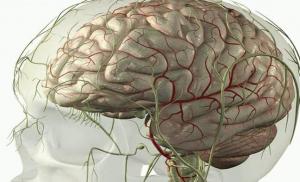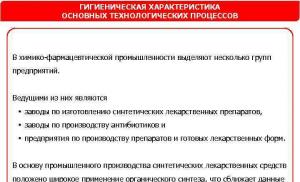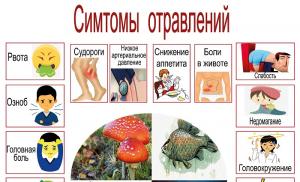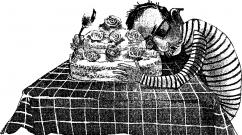How to show the way in English. How to navigate the city in English: a simple phrasebook
It is often necessary to ask in English how to get to a place or where an object is located. In the article we looked at where all kinds of objects are located and what prepositions should be used to describe their location.
This article provides examples of questions and answers used to indicate direction ( directions ). These expressions will help you find your way in an unfamiliar city. They will also help if you use, for example, Google maps. At the end of the article there is an example of how to get from the Tate Modern Gallery ( Tate Modern ) to St. Paul's Cathedral ( Saint Paul Cathedral ) in London.
Options for questions on how to get there | Options for answering questions |
| Excuse me! I’m looking for the nearest ATM. (Sorry, I'm looking for the nearest ATM.) | Go to the corner and turn on Pushkin street. (Go to this corner and turn onto Pushkin Street.) |
| How do I get to the toilet? (How do I get to the toilet?) | It's around the corner from the bank. (It's a stone's throw from the bank.) |
| What’s the best / easiest / quickest way to Victoria station? (What is the best/easiest/fastest way to get to Victoria Station?) | The best way is to go right on Great Peter Street. (It is best to go straight to Peter the Great Street.) |
| Where can I find the Denmark Hill station? (Where can I find Denmark Hill station?) | Take the second turn on the right. (Take the second right.) |
| Where is the night club? (Where is the nightclub?) | Walk across the street. (Go across the street.) Take Medway Street. (Go down Medway Street.) |
| How far is the nearest book shop from here? (How far is the nearest bookstore?) | I'm afraid, I have no idea. - I'm afraid I don't know. |
| Is there a supermarket around here? (Is there a supermarket nearby?) | You're going in the wrong direction. Turn back on Victoria Street. (You're going in the wrong direction. Go back to Victoria Street.) |
| Can you tell me where the nearest bus stop is? (Can you tell me where the nearest bus stop is?) | Follow Birdcage Walk for 100 meters. (Follow Bedcage Walk 100 meters.) |
| Do you know where the drugstore is? (Do you know where the pharmacy is?) | Go (straight) along Old Pye Street until you get the school. (Walk along Old Pie Street until you reach the school.) The drugstore is opposite the school. (Pharmacy opposite the school) |
| Could you tell me how to get to Trafalgar Square? (Could you tell me how to get to Trafalgar Square?) | Take the third street on the left. (Take the third street on the left.) |
| Is this the right way to Piccadilly Circus? (Is this the right road to Piccadilly Circus?) | Keep going for another 100 meters. It’ll be straight ahead of you. (Keep walking another 100 meters. It will be ahead of you.) |
| How far is the Ruskin park? (How far is Ruskin Park?) | It’s a half mile from here, next to the hospital. (It's half a mile away, next to the hospital.) |
| Can you show me on the map, where Victoria Station is? (Could you show me on a map where Victoria Station is?) | Of course. You are here. And Victoria Station is right here. (Of course. You are here. And Victoria station is here.) |
| What bus should I take? (Which bus should I take?) | Take the bus 406. (Take the 406 bus.) |
Example: How to get from Tate Modern to St Paul's Cathedral in London

Google built a path for us and gave us a clear explanation, however, we will present it in a more interesting conversational style, using transitional words and phrases to connect ( transition words and phrases ).
After leaving the Tate Modern, go right towardMillennium Bridge. This is a pedestrian bridge through which you pass over the Thames. Then you get to Peter's Hill. Saint Paul Cathedral is already visible ahead. Continue walking along Peter's Hill. Cross the Queen Victoria street. There is a traffic light at the crossroads. You have to press the button and wait for the green light. Then continue to move forward. Just on your left you will see the National Firefighters Memorial. Continue going straight ahead and finally you get St. Paul's Churchyard. The whole way is about 1 kilometer.
When you leave the Tate Gallery, walk straight towards the Millennium Bridge. This is a footbridge that takes you over the Thames. You will then come to Peter Hill. St. Paul's Cathedral is already visible ahead. Continue along Peter Hill. Cross Queen Victoria Street. There is a traffic light at the intersection. You have to press the button and wait for the green light. Then continue forward. You'll see the National Firefighters Memorial on your left. Continue forward and you will finally come to the courtyard of St. Paul's Cathedral. The entire path is about 1 kilometer.
In this article you will learn how to ask and give directions. Rules for constructing and answering this topic will be discussed. After studying this article, it is recommended to learn phrases from “)”, thereby consolidating what you have learned.
- If you want to ask for directions, use the following expressions:
How do I get to...?
How do I get to...?
Excuse me, how do I get to the post office?
Excuse me, how do I get to the post office?
Is there a...near here?
Is there any nearby...?
Excuse me, is there a bank near here, please?
Excuse me please, is there a bank nearby?
Could (can) you tell me where the ... is?
Could you tell me where is...?
Excuse me, could you tell me where the National Gallery is?
Excuse me, could you tell me where the National Gallery is?
Could (can) you tell me the way to ...?
Could you tell me the way to...?
Could you tell me the way to the bus station, please?
Could you tell me the way to the bus station, please?
Important. To be polite, you need to say " Excuse me", or at the end" Please". But it is not recommended to use these two words in one sentence - it will be too formal. The word " Could"is more polite than" Can".
- To indicate the way, standard expressions are usually used:
Go straight...
Go...
Go straight on ahead (UK version)
Go straight ahead (American version)
Go straight
Turn left/right...
Turn left/right...
Turn left at the bank
Turn left near the bankTurn right at the corner
At the bend, turn right
Take a left/right (American version)
Go past/across...
Pass (through)...
Go past the bridge
Cross the bridgeGo across the street, road, crossroads
Walk (through) a street, road, intersection
Keep going until you get to...
Keep going until you reach...
Keep going until you get to the park
Keep walking until you reach the park
One example of a possible conversation:
Excuse me. Could you tell me the way to the library, please?
Sorry. Could you tell me the way to the library, please?Yes, sure. Go straight ahead and keep going until you get to the post office. Then turn left and keep going until you get to the crossroads. Turn right at the crossroads and the library is on your left.
Yes, sure. Go straight and keep going until you reach the post office. Then turn left and continue walking until you reach an intersection. At the intersection, turn right and the library will be on your left.Thank you very much.
Thank you very much
Let's continue the theme of the previous lesson and talk about how to ask for directions in an unfamiliar place, as well as how to show someone the way. To get started, check out the useful phrases from the lesson.
Words and expressions on the topic (listen)
cross/ go across the street – to cross, go over
go past - pass by
go along – go along
go straight ahead - go straight ahead
go back – go back, return
go down/up the street – go down/up the street
to the right/left - right/left
on your right/left – to your right/left
turn - turn, turn
take the first turn to the right (to the left) - the first turn to the right (left)
round the corner - around the corner
at/on the corner – on the corner
close to – close to
I’m lost./I lost my way. - I'm lost.
How do I get to…? - How do I get to…?
How far is it? - How far is it?
How far is it to…? - How far is it to…?
Is this the right way to...? - Is this the right road to...?
What's the best way to...? — What is the best way to get to...?
How long will it take to get there? - How long does it take to get there?
It's five minutes walk from here. - It's a 5-minute walk from us.
It's too far to walk. - Going too far.
It’s quite a way from here. - It's quite far from here.
It's quite near. - It's pretty close.
It's not far from here. - It's not far from here.
It's two blocks from here. - It's two blocks from here.
Do not forget about etiquette and phrases such as “excuse me” when you want to attract attention, as well as words of gratitude and requests: “thanks” and “please”. The more polite you sound, the better! For example: Excuse me, can you show me the way to the city center, please?
Using new words in speech. Dialogues
Read some dialogues. To make your work with the lesson material fruitful, you can try to reproduce these dialogues from memory or create similar ones based on their example, using the names of the streets of your city.
Dialogue 1.
—Excuse me?
- Yes?
- I'm lost! Is this the way to City Square?
- No, I’m afraid it isn’t. You're going the wrong way.
- Oh, dear. Can you tell me the way to City Square?
- Yes. Go straight along this street and then take the first turn left. You will see a sign to City Square.
- Thank you!
- Sorry?
- Yes?
- I'm lost. Is this the road to City Square?
- I'm afraid not. You are going the wrong way.
- Oh, God. Can you tell me the way to City Square?
- Yes. Walk straight along this street and turn left. You will see a sign for City Square.
- Thank you!
Dialogue 2.
— I need to get to Washington Avenue. Can I get there by bus?
- Yes, you can take any bus, but you’d better walk. It's quite near.
— How long will it take to get there?
— It’s 5 minutes walk from here. Go down this street and then take the first turn to the left.
- Thanks a lot!
“I need to get to Washington Avenue.” Can I go by bus?
— Yes, you can take any bus, but it’s better to walk. It's pretty close.
— How long does it take to get there?
- Five minutes on foot. Walk down the street and then take the first left.
- Thank you!
As you can see, all conversations on the street with directions and questions about the road should be as informative, understandable and, of course, polite as possible.
Lesson assignments
Task 1. Translate into English.
- I'm afraid we're lost and won't be able to find our way.
- How to get to York Village?
- Excuse me, how do you get to the Mayflower Hotel? — Walk two blocks, cross the street, you will see a hotel on your right.
- Where are you? - On the corner of Maple Street and Taylor Avenue.
- Is this the correct route to Duke Street? - Yes, it's a ten-minute walk.
- Go up the street and turn right at the second intersection.
- The pharmacy is just around the corner.
- How far is it to Red Square?
So, you have already easily checked into a hotel using our phrasebook “English in a Hotel”, you have rested after the trip and are ready to show yourself, watch people - go on an excursion to the city. Of course, having a Russian-speaking guide makes life easier for our tourists abroad, but traveling as a “savage” is much more interesting and cheaper. And if you also learn the phrases we suggested for orientation in the city, then your trip will be easy and pleasant. In addition, thanks to your knowledge of English, you will be able to make new friends from another country.
We have written a simple phrasebook for travelers, in which you will find dialogues, phrases and vocabulary on 25 essential topics. Go on a journey with the main character and improve your English. You can download the book for free at.
Names of main institutions in English
To begin with, we will give you the names of various places in the city on English. We recommend learning them first, you don't want to end up in a cave instead of a toilet.
| Word/Phrase | Translation |
|---|---|
| Transport | |
| an airport | airport |
| a bus stop | bus stop |
| a bus/coach | bus |
| a bus station/terminal | bus station, bus station |
| a gas/petrol station | gas station |
| parking | parking |
| rent-a-car / car hire | car rental |
| a subway/underground | metro |
| a subway station | metro station |
| a railway/train station | railway station |
| a train | train |
| a taxi | Taxi |
| Parts of the city | |
| a bridge | bridge |
| a corner | corner |
| a crossroads | crossroads |
| a pedestrian crossing | pedestrian crossing |
| a pedestrian area | pedestrian zone |
| a street | street |
| a square | square |
| Institutions | |
| a B&B (bed and breakfast) | mini-hotel providing bed and breakfast only |
| a motel | motel |
| a hotel | hotel |
| an inn | small hotel |
| a bank | bank |
| a fire department | fire department |
| a hospital | hospital |
| a library | library |
| a lost property office / lost and found | lost and found |
| a post office | |
| a police station | police department |
| a school | school |
| a shop | shop |
| a tourist information office | institution that provides background information tourists |
| a WC (water closet) / restroom / bathroom / toilet / lavatory / loo | toilet |
| Entertainment facilities | |
| an art gallery | art gallery |
| a ballet | ballet |
| a bar | bar |
| a bowling alley | bowling |
| a café | cafe |
| a cinema/movie theater | cinema |
| a circus | circus |
| an exhibition | exhibition |
| a nightclub/disco | nightclub |
| an opera | opera |
| a pub | pub |
| a restaurant | restaurant |
| a stadium | stadium |
| a swimming pool | pool |
| a theater | theater |
| a zoo | zoo |
| Attractions | |
| a canyon | canyon |
| a castle | lock |
| a cathedral | cathedral |
| a cave | cave |
| a church | church |
| a fountain | fountain |
| a monument/memorial | monument/monument |
| a mosque | mosque |
| a museum | museum |
| a palace | castle |
| a park | park |
| a sculpture | sculpture |
| sights/places of interest | attractions |
| a statue | statue |
| a temple | temple |
As you noticed, there are several words for the name of the toilet. Typically, WC is used in almost every country, and in the UK the words toilet and lavatory are often used. The word loo is also used there; it has an informal connotation. In the US, the most popular words are restroom and bathroom, although the latter also refers to a bathroom with a toilet in someone's home. In Canada, the word bathroom is widely used. However, even in different regions of the same country, different words may be used, so do not be afraid to use any of them: you will be understood in any case.
How to ask for directions in English
So, let's imagine that you decide to take a walk around the city, sightseeing and enjoy beautiful views. If you decide to do without a tour guide, then to navigate the city you will need a map and a guide book, as well as knowledge of some phrases in English that will help you reach your destination, because it is not always easy to find your way around map, and some attractions or institutions may not be marked on it at all.
Where can I get a card? Firstly, almost every hotel will offer you a map of the city. Secondly, you can buy it at a newsagent's. Choose the most detailed one, with a large scale and a guide for tourists: good maps will indicate all institutions, monuments, museums, etc. To purchase a map, ask the following question: Do you have a map of the city? (Do you have a map of the city?).
By the way, at the hotel you can ask the staff what places are worth visiting in the city. Ask a simple question: Could you tell me, please, what is worth visiting? (Can you tell me what is worth visiting?). This way you will get first-hand information about the most interesting attractions.
Let's imagine a very real situation: you are confused in the streets of an unfamiliar city and cannot find the attraction you are looking for. In this case, contact a passerby: apologize and ask for help. If you see a policeman next to you, ask him for help, it’s safer: in this case, you definitely won’t run into scammers.
You chose a “victim” for questioning, stopped him and attracted his attention. Now you should find out from a passer-by how you can get to the desired institution or chosen attraction. This is where you will need knowledge of the words from our first tablet. The following phrases are synonymous, that is, interchangeable. Choose those that are easier for you to remember, and simply substitute the name of the establishment you need in them.
| Phrase | Translation |
|---|---|
| What is the name of this street? | What's the name of this street? |
| Is there a pub near here? | Is there a pub somewhere nearby? |
| Where is the theater located? | Where is the theater? |
| Where is the restroom? | I am looking for the restroom. |
| Excuse me, do you know where the museum is? | Sorry, do you know where the museum is? |
| Excuse me, can you give me quick directions to the library? | Excuse me, could you tell me where the library is? |
| Excuse me, could you tell me how to get to the train station? | Excuse me, could you tell me how to get to the station? |
| Excuse me, how can I get to the nearest bank? | Excuse me, how can I get to the nearest bank? |
| Excuse me, do you know how to get to the theater from here? | Sorry, do you know how to get to the theater from here? |
| Excuse me, what is the best way to get to the post office? | Excuse me, what's the best way to get to the post office? |
| Excuse me, can you show me the way to the nearest cinema? | Excuse me, could you show me the way to the nearest cinema? |
| Could you tell me the way to the nearest hospital? | Could you tell me how to get to the nearest hospital? |
| Is this the way to the train station? | Is this the way to the train station? |
| Which is the shortest way to the cinema? | What's the shortest route to the cinema? |
| Excuse me, I am looking for the temple. Do you know where it is? | Sorry, I'm looking for a temple. Do you know where it is? |
| Excuse me, I am looking for a restaurant. Do you know how to get there? | Sorry, I'm looking for a restaurant. Do you know how to get there? |
| Could you show me on the map? | Could you show me on the map? |
It would also be a good idea to check with a passerby whether the attraction you need is far away: this way you can decide whether to use public transport or walk.
In this article we presented phrases for local orientation, and in the article “” we talked in detail about how to rent a car and communicate in public transport in English.
How to give directions in English
So, you overcame the language barrier in one fell swoop and easily asked where you should go. Now you need to understand what your interlocutor is answering. To do this, study the following phrases in English. In addition, you can use these same sentences when meeting a foreigner in your own city: now you can easily explain to the person how to find the nearest bank or metro station - +10 to communication skills in English.
First, learn basic phrases that will help you indicate the direction of movement.
| Phrase | Translation |
|---|---|
| go along (the beach) | walk along (the beach) |
| go past (the school) | go past (the school) |
| turn right/left = go right/left = take a right/left | turn right/left |
| turn right/left at (the cinema) | turn right/left at (cinema) |
| turn right/left into (the main road) | turn right/left onto (main road) |
| go ahead = go straight ahead = go straight on | go straight |
| across | on the other side of the street, across the street from |
| opposite | against |
| on your right/left | to your right/left |
| first/second turning on the left/right | first/second turn left/right |
| in front of | in front of (opposite something) |
Here are simple answers that you can get in response to a question about the direction of movement:
| Phrase | Translation |
|---|---|
| It is not far from here. | It's not far from here. |
| It is over there. | It's over there. |
| It is on Johnson Street. | It's on Johnson Street. |
| It is in front of the theater. | This is in front of the theater. |
| It is across the street. | It's across the street. |
| Keep going. | Continue walking straight (in the same direction). |
| Cross the street. | Go to the other side of the street. |
| The museum is opposite to the church. | The museum is opposite the church. |
| The post office is on your right/left. | Mail is to your right/left. |
| Take the second turning on the left. | Take the second left. |
| Go along Johnson street until the restaurant. | Walk along Johnson Street to the restaurant. |
| It is 20 minutes by car / on foot. | It's a 20 minute drive/walk. |
| Take the bus number six. | Take bus number six. |
And now a small life hack for those who are afraid of getting confused in the long explanations of a passerby: show your interlocutor a map and ask the question: Could you show me on the map? (Could you show me on the map?). Then they will simply show you where to go. This way you definitely won’t get confused or get lost.
Read the following dialogues to help you understand how to give directions in English:
Dialogue #1

- Excuse me, where is the theater located?
- Go left here and then take the second right. The theater will be around the corner.
Excuse me, where is the theater?
- Go left and then turn right at the second corner. The theater will be right around the corner.
Dialogue #2

- Excuse me, could you tell me how to get to the nearest bank?
- Go straight on for about 2 miles. You will see the bank directly opposite to the post office.
Excuse me, can you tell me how to get to the nearest bank?
- Go straight along this street for about 2 miles. You will see a bank directly opposite the post office.
Dialogue #3

- Excuse me, could you tell me the way to the museum?
- It's pretty far from here. Turn left and then right, go along for a mile or so and the museum is on your left.
Excuse me, can you tell me the way to the museum?
- It's quite far from here. Turn left and then right, go straight for about a mile and the museum will be on your left.
Dialogue #4

- Excuse me, I am looking for a cafe. Do you know how to get there?
- Go left here and turn right after you go past the bank. The cafe is in front of the market.
Excuse me, I'm looking for a cafe. Do you know how to get there?
- Go left and turn right after you pass the bank. The cafe will be right in front of the market.
We also recommend listening to an audio recording of a lesson for English learners from the BBC, where they talk about how to give directions. The text of the recording can be downloaded on the website, so you can easily understand this lesson.
In the institution
You have safely reached your chosen attraction or entertainment venue. Now you will need a few more phrases so that you can find out the price of the ticket, as well as some rules for visiting this place.
| Phrase | Translation |
|---|---|
| I need a guide who speaks Russian. | I need a guide who speaks Russian. |
| How much does a ticket cost? | How much does a ticket cost? |
| How much is the entrance fee? | What's the cover charge? |
| Is the art gallery open on Sundays? | Is the art gallery open on Sundays? |
| What time does the museum open? | What time is the museum open? |
| Is this way to the exit? | Is this the way out? |
| Am I allowed to take photos? | Can I take photos? |
| Can you take a photo of us, please? | Please take a photo of us. |
| May I use the toilet? | Can I use the toilet? |
| Is this seat free? | Is this place free? |
Inscriptions and signs in English
| Phrase | Translation |
|---|---|
| Warning and prohibition signs | |
| danger | dangerous |
| caution | carefully |
| attention | attention |
| wet paint | painted |
| no swimming | swimming is prohibited |
| beware of the dog | be aware of dogs |
| keep off grass | don't walk on the lawns |
| sitting on grass permitted | allowed to sit on the grass |
| private property | private property |
| stop / don’t cross / don’t walk | stop / stop |
| Inscriptions in institutions | |
| open | open |
| closed | closed |
| closed on Sundays | closed on Sundays |
| pull | to yourself (inscription on the door) |
| push | from myself (inscription on the door) |
| entrance/way in | entrance |
| admission by ticket only | entrance by ticket only |
| no entrance / no entry | no entry |
| employees only / staff only | staff only |
| authorized personnel only / no admittance | no entrance for unauthorized people |
| exit to street | going outside |
| exit/way out | exit |
| no exit | no way out |
| emergency exit | emergency exit |
| entrance fee | entrance fee |
| keep the door closed | close the door behind you |
| smoking section | section for smokers (for example, in a cafe) |
| no smoking section | non-smoking section |
| reserved | booked |
| occupied | busy |
| no vacancies | no vacancies |
| elevator/Lift | elevator |
| out of order | doesn't work/broken |
Useful sites to learn how to navigate the city in English
- Travel English Lessons- educational 2-3 minute videos in English for travelers. Native speakers speak clearly and use simple phrases, so watch, listen, get used to the sound of English speech and repeat the sentences after the speakers - at the same time learn everything you need.
- LearnEnglishFeelGood.com - site with exercises. Pay attention to the Sightseeing section, where you will find useful tasks for practicing the vocabulary you have learned. Practical exercises will help you consolidate all the phrases in your memory.
In addition, do not forget about our school: it will allow you to improve your knowledge in the shortest possible time, and you will feel confident abroad.
Complete list of words and phrases for download
Don't forget to download the list of useful vocabulary. If he is with you on a trip, then you can always find the place you want to visit.
(*.pdf, 282 Kb)
Ready to test your knowledge? Then try to score the maximum number of points in our test.
Vocabulary test on the topic “How to navigate the city in English: a simple phrasebook”
We think that now you definitely won’t get lost in the city, and if this happens, you can easily cope with this trouble, using the help of local residents and phrases from our phrasebook. We wish you not to get lost in any situation, have a pleasant journey!
Hello, dear listeners and readers! We continue slowly. But it’s true to master the series of audio lessons “That’s what they say in America,” and along with the course, the spoken English of ordinary Americans. During today's lesson, you will learn ask directions and also explain directions, how to get or get to the place you or someone else needs in American English. Ask for directions and give directions in English
In a foreign city, it is sometimes very difficult to find a certain street or building, but, as they say, language will take you to Kyiv, and in our case, to Washington. Do not hesitate to ask passers-by how to get to or get to the place you need, and do not refuse to help other foreigners if they ask you for directions. And in order to be able to ask or explain correctly, today you will learn a lot of new and useful vocabulary in English.
As always, we start with Martin Lerner talking to other characters. This time our good friend, Voice of America reporter Martin, walks the American streets and, asking questions, tries to figure out how to get to the Museum fine arts, asking directions from several passers-by. Let's find out what the strangers answer him, and whether he managed to find out how to get to the museum:
Martin: Excuse me, where is Art Museum? - I'm sorry, where is it?
Male 1: Sorry. I don't know. - Sorry. I don't know.
Martin: Where is the Museum? — Could you tell me where the Museum of Fine Arts is?
Female 1: Go straight ahead. - Go straight ahead.
Martin: Excuse me, where is the Art Museum? — Excuse me, can you tell me where the Museum of Fine Arts is?
Female 2: It's on the river. It's on the Jefferson Street. — It is located on the river bank. It is located on Jefferson Street.
As you can see, it is easier for women to make contact, unlike men. And with the help of two strangers, Martin managed to find out where the place he needed was located.
Remember also online lesson Find out who is doing what
Use the audio recording of the lesson to hear how ordinary Americans pronounce the dialogue and hear other words and phrases in English. Pay attention to the intonation with which Lerner asks passers-by for directions: /wp-content/uploads/2014/09/russian_english_006.mp3
When listening to how Americans pronounce words, repeat all the expressions after them to practice your own pronunciation. Follow A. Fillipova's instructions to master the lesson step by step.
Asking for directions in English
Using a convenient table with phrases in English and translation into Russian, today you will learn new expressions, question words, as well as some grammatical categories of words: verbs, nouns, pronouns, adverbs, prepositions.
Ask and explain |
|
| Phrases | |
| I'm sorry | Sorry. I'm sorry |
| Sorry. Sorry | Excuse me |
| Verbs | |
| ask | ask |
| go | go |
| come | come |
| turn | turn |
| Verb + negative particle + know | |
| written form - in written speech | I don't know |
| spoken - in oral speech | I don't know |
| Nouns | |
| building | building |
| museum | museum |
| director | director |
| river | river |
| Adverbs | |
| left | left |
| right | right |
| down | downstairs |
| up | upstairs |
| directly | straight ahead |
| there | there |
| Prepositions | |
| right there | over there |
| on: on the river bank | on: on the river |
| Pronouns | |
| It: It’s on the river | he, it, this: He is on the river |
| Question words | |
| Where | where |
You may have noticed that some words and even entire expressions can be translated differently, but in context these lexemes are very similar and can be interpreted as indicated in the table. Be sure to save and memorize this table!
See also interesting article













